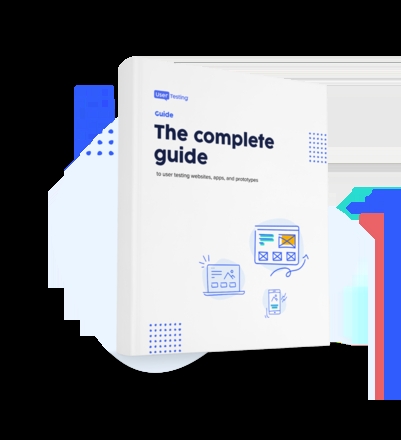
What is product testing?

Before releasing new products, features, and services into the wild, you’ve hopefully done your due diligence. Testing early and often throughout the design and development cycles is critical. Product testing is an integral part of your organization's success whether you’re focused on digital or in-person experiences. So here’s a quick look at all things product testing.
What is product testing?
Product testing is the important process of gathering feedback and reactions directly from current or potential users about your products or services. Essentially, users try out your prototype and tell you what they think and how they feel about the experience.
Why is product testing important?
By getting an outside perspective, you can proactively improve your product and validate that it addresses customers’ needs and gives them what they want.
Use product testing to prioritize critical features by asking users what matters to them the most. Discover if there’s anything confusing or offensive about your design. Determine the best pricing model for your product or service and what customers are willing to pay. Gauge your customers' expectations so you can measure how well your product, service, or feature meets and exceeds them.
While it’s more work upfront, product testing means avoiding wasted development cycles, failed offerings, and sunk costs. In the end, it costs more to skip product testing.
When should you conduct product testing?
Conducted before market launch, product testing helps you determine your product’s viability before valuable time is spent developing the details.
But product testing is helpful throughout an entire product lifecycle—from the initial idea through to the eventual finished product and beyond—because the best products and services constantly add new and augment existing features. This is why we say test early and often.
However, prioritization of product testing depends on your development methodology:
1. Test upon completion of all product development for the product release
In the traditional waterfall methodology, all phases of product development flow sequentially like a waterfall, with each phase wrapping up before another one begins. There’s no overlap between phases—it’s a linear series of events where the entire project is planned, and phases are “frozen” once completed, leaving no opportunity for rework.
Since most research is done upfront in the waterfall method, it’s usually easier and more accurate to estimate how much time is needed for each requirement when you use this method. But it’s also much harder to change course if parameters change after the project begins. And that’s an all-too-common occurrence.
2. Test as soon as a functioning requirement (regardless of its size) is built
On the other hand, agile methodology uses an incremental approach that enables you to quickly adapt requirements during the project roadmap as user needs or the market dictates. Instead of extensive planning locked in stone, product development and research are conducted across several successful “iterations” where leaders can constantly reprioritize the requirements backlog list.
Done well, agile approaches like scrum, lean, kanban, extreme programming (XP), and feature-driven development (FDD) continuously gather customer feedback and foster close team collaboration, making agile the methodology experts recommend if you want to create the highest-quality outcomes.
What are the different types of product testing methods?
There are many different product testing methods to help ensure your product meets user needs and operates as expected. Here are a few of the most common:
Concept testing
Since product testing should come into play at the very beginning of the process, concept testing helps teams thoroughly vet a new idea’s potential. This might involve running your ideas by people who represent your target user.
Prototype-based product testing
Once your concept is fleshed out, now you can build a prototype. Prototype-based product testing lets you test different versions of a design against each other by collecting feedback from users. Invite people who match your ideal users to try out the prototype—even non-functional ones. You’ll quickly learn what your users really want by observing their behavior.
Market testing
Sometimes called “soft launch,” market testing is when you launch your product in a limited area or to a limited audience for a period of time, so you can learn how the market receives your product. Used to improve the product and marketing strategy before a full launch, market testing typically focuses on one core aspect of your product, not the complete product.
Usability testing
When you conduct usability testing, you show your design to real users to see how they would interact with—and how they respond to—your product. These days, usability testing can include remote, unmoderated tests that are set up beforehand and taken by your ideal user.
From preference testing to discovering where users get stuck and confused, usability testing quickly highlights areas for improvement both before and after a product launch. Types of usability testing for products include:
- Visual design testing: gather insights about creatives, designs, videos, or other visual elements
- System usability evaluations: measure a product or service’s ease of use
- Card sorting: understand how contributors group content and label categories
- Needs and frustrations discovery: identify opportunities to improve customer experiences or activities
- Web/mobile/prototype evaluations: observe people using a pre-production product or experience
- Information architecture and navigation testing: measure how easily users find content within a site’s navigation
Quality assurance product testing
Quality assurance product testing ensures a product or service operates as intended. Common types include:
- Unit testing: in which developers test a new requirement
- Test cases: dig into all the ways a user might interact with a specific feature to uncover scenarios that haven’t been considered
- Environment testing: run test cases in every environment in which the product is used (e.g., operating systems for software environments) to surface any issues
- Regression testing: ensure that the entire product continues to operate as intended after new features are added
- Automated testing: make executing regression tests faster, more consistent, and more thorough through tests that have automated criteria

Get started with experience research
Everything you need to know to effectively plan, conduct, and analyze remote experience research.





